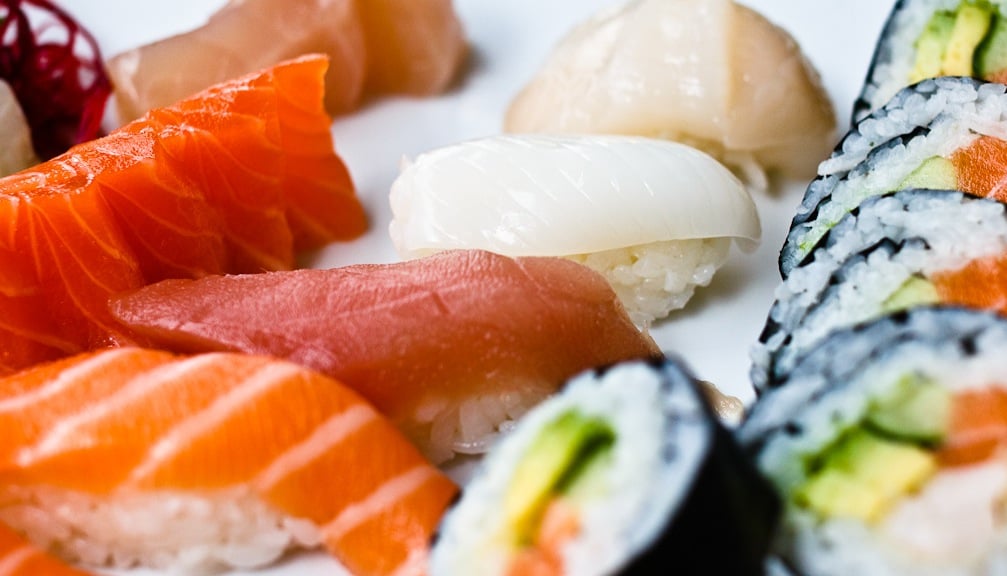Sashimi: Is it Okay to Eat Raw Fish?

You love sushi, but have you ever wondered if the sashimi you’re scarfing down is safe? For the longest time, I’ve avoided raw fish in my sushi, because I’ve been ignorant about what is actually safe and what is not. Here’s what you should know about raw sushi so you can decide if you want to take the risk.
Not all fish is edible in its raw state. However, many are! Tuna, salmon, clams, scallops, yellowtail, halibut, flounder, squid, gizzard shad, mackerel, sea bass, and snapper are among those that are commonly consumed in their raw states, with a few being treated with vinegar or flash-steamed before served.
When consuming sashimi, there are several threats to look out for: The fish may be not fresh; it may be rotten or laden with bacteria, but this is often the easiest to detect before consumption as fish gone bad usually carries a noticeable stench. The biggest threat is parasites, which are not always detectable. All raw meat consumption goes hand in hand with this risk, and it is the reason we cook meat to begin with – heat kills parasites, which are generally either cod worms, seal worms or tape worms. Cod worms feast on cod, haddock, Pollock and hake and you can often detect them with the human eye. Seal worms are found in salmon, mackerel, Pacific rockfish, jacksmelt, halibut and flounder. They can be spotted with the human eye but are more difficult to detect, so you have to look closely. Cod and seal worms often go through your body without causing a stir, the worst-case scenario being a stomachache. Tapeworms, however, can linger in your body alive for quite some time and grow as long as 20 feet.
The hygienic standards of farmed fish in the U.S., the UK, Norway, New Zealand, Canada and Japan are set very high, and they are generally safe to eat. Most fish these days are frozen after capture as well. Freezing not only kills parasites, but it also keeps fish fresh until they reach their dining establishment destination. Most experienced chefs opt for frozen fish before serving them raw.
For me, consuming raw fish is less about the risk of parasites than it is about my concern for our world’s water and the contamination therein. We can never know what circumstances wild fish have been living in, given our often reckless treatment of oceans and seas.
In the end, the risk you take is up to you – if the sushi establishment you frequent appears a little rough around the edges, forget the sashimi and opt for a cooked option. Sushi places with a reputation and loyal following will probably do their best to respect cleanliness standards. For those concerned about mercury levels, check this list of low to high mercury containing fish.
Related on Organic Authority
DIY Sushi: The Easy, Affordable Way
10 Healthy Recipes That Could Kill You
TLC’s “Freaky Eaters”, Compulsively Eating Raw Meat
image: torbus

